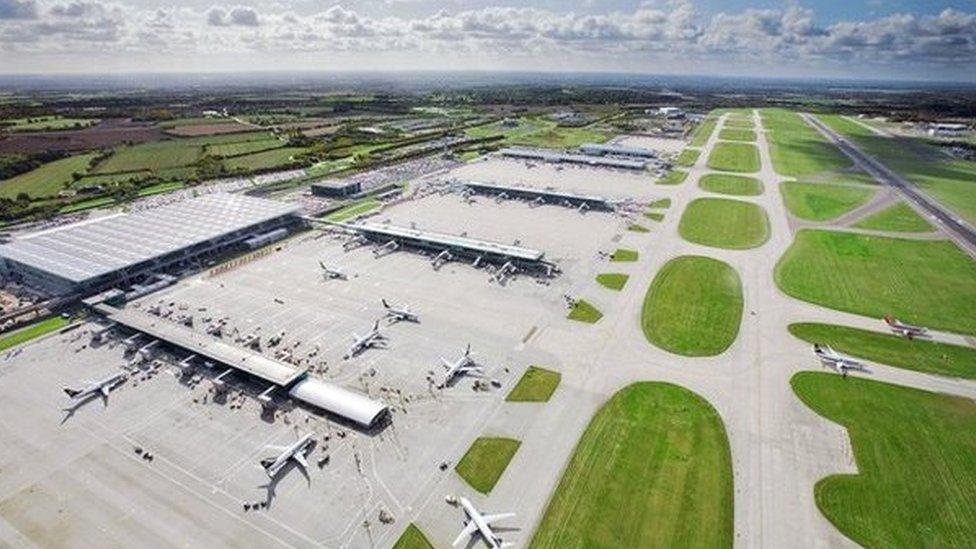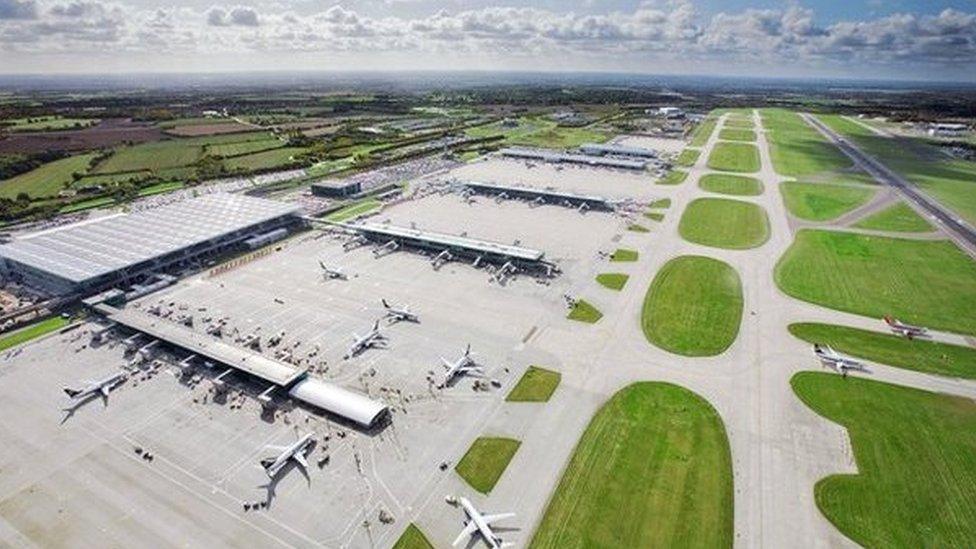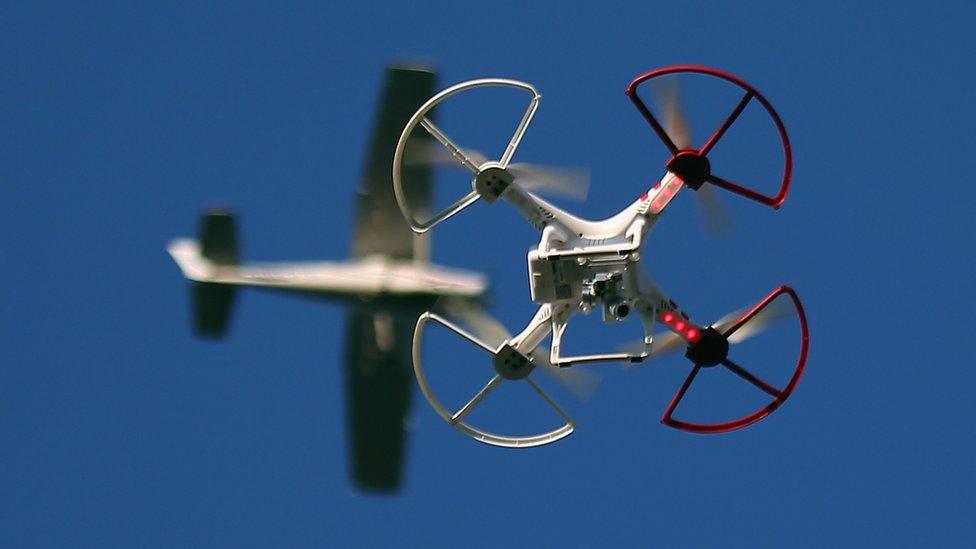Stansted Airport: Drone 'serious crash risk' to Boeing 737
- Published

Another incident involving a drone near Stansted happened two months earlier in March
A drone posed a "serious risk of collision" to a Boeing 737 near Stansted Airport, a report has stated.
The black and white craft with four rotors came within 82ft (25m) of the aeroplane at 3,000ft (914m) on its approach to the airport in May.
A Boeing pilot saw the drone cross its flight path and assessed the risk as low, but the UK Airprox Board said "a serious risk of collision" existed.
"The board considered separation was reduced to the bare minimum," it added.
The drone was seen at the same altitude as the Boeing 737 and flew left to right across its path.
The pilot reported that "it was obvious from the flight path of the drone that avoiding action was not necessary because it would not impact the aircraft".
The UK Airprox Board, which assesses incidents in UK airspace, disagreed and regarded it as Category A risk - the most serious.
The drone operator, who has not been traced, was in breach of the Air Navigation Order 2009, which refers to flight safety of unmanned craft.
Drones must not be flown in airspace or above 400ft (121m) without permission from air traffic control.
An "observer" should also keep a close eye on any craft flying so high, but the board said it believed no-one would have been able to see it from the ground.
The incident, which happened above Castle Camps, Cambridgeshire, followed another in March when a Boeing 737 pilot spotted a drone approximately 200ft away at the same altitude.
The 737 was approaching Stansted at 2,000ft (609m) over High Wych in Hertfordshire at the time.
The board concluded the assessment of risk was difficult due to estimated distances, but it was "clear to the board that the drone had come close to the B737".
"The safety of the aircraft may have been compromised."
The operator of that drone has also not been found.
A spokesman for Stansted Airport said: "Drones pose a serious risk when flown near airports.
"Owners of drones are legally responsible for their safe flying and could face prosecution if they breach Civil Aviation Authority guidelines."
- Published23 July 2016

- Published7 July 2016
